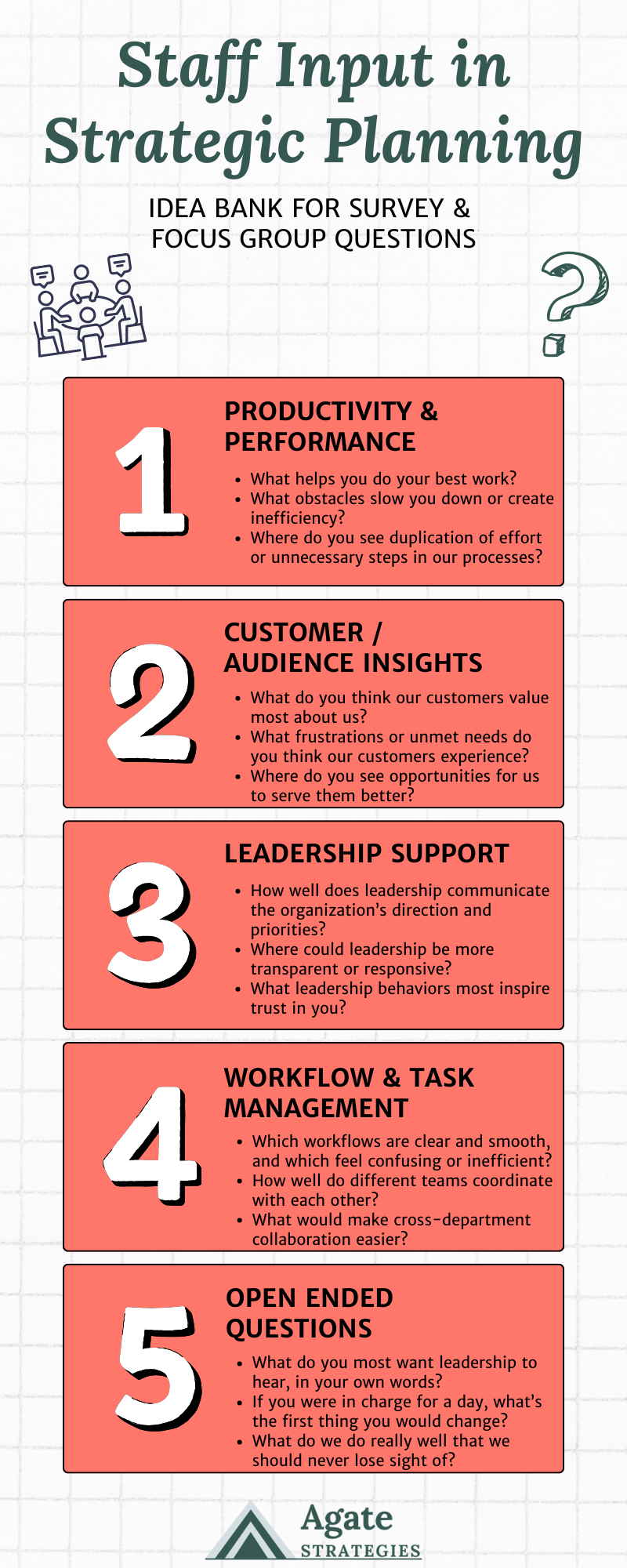Why Including Staff in Strategy Matters
Most organizations know they should have a strategic plan. However, studies show that only about half of businesses have one— and even fewer put theirs to use once it’s written. Oftentimes strategy is shaped by a handful of senior leaders, and then handed down to staff who are expected to implement it. The problem? The people closest to the work — the ones who understand client needs, operational hurdles, and day-to-day realities best — are rarely invited into the process. Having the buy-in of your organization’s leadership in your strategic plan should be a given. Equally important, however, is including staff perspective; otherwise, any plan is likely to stall before being put into action.
There are many different ways of including staff in your strategic planning process, and it’s important to be intentional about how you do so. One suggestion is including staff members on your core planning team. In most organizations, there are non-leadership staff members who have a clear understanding both of the organization’s mission and goals, as well as staff perspectives and organizational culture. Whether or not you include staff on your core strategic planning team, there are several ways to get staff feedback throughout the planning process. Surveys are a great way to get staff feedback and these can be a simple and straightforward tool that you use throughout the process. Focus groups are a great tool for soliciting feedback as questions are more open-ended and the conversation generated by the group can yield exciting and unexpected results. Organizations I have worked with echo this sentiment: getting staff input is informative, helps keep staff invested in the process, and ensures the strategic plan is able to be operationalized. Great strategy comes from harnessing organizational knowledge at every level.
Another benefit of including staff in strategic planning is that doing so can help improve leadership-frontline relations. The inclusion of staff signals that leadership takes their team members’ work and efforts seriously, and understand that they have valuable knowledge that they can contribute. Strengthened trust between leadership and staff is also great for improving organizational culture and increasing retention.
As the work-culture landscape continues to rapidly shift, it is important to consider what your organization can do differently in order to best support your team and promote a positive organizational culture. We all know about current employee engagement trends; so, what are we going to do about it? When employees feel engaged and supported, everyone benefits. At Agate Strategies, we help organizations build inclusive planning processes that unlock buy-in, creativity, and momentum from every level of the team.
Some Ideas to Help Get You Started

